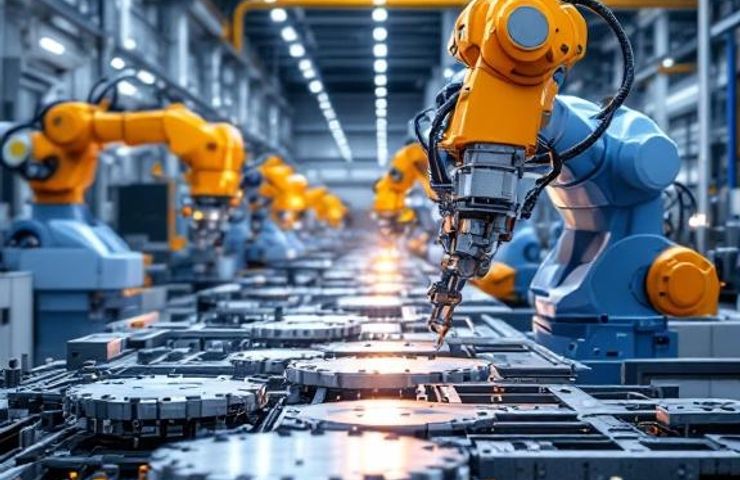
Cell Impact and thyssenkrupp to Scale Flow Plate Manufacturing
November 7, 2025Cell Impact AB and thyssenkrupp Automation Engineering just inked a strategic cooperation agreement in Karlskoga, Sweden on November 6, 2025, and trust me, this is more than just another handshake deal. It’s a big leap toward scaling up fuel cell technology manufacturing. By meshing Cell Impact’s patent-pending Cell Impact Forming™—a lightning-fast, green-metal forming trick—with thyssenkrupp’s know-how in automated assembly lines, they’re gearing up to slash costs and ramp up production of flow plates for fuel cells and electrolyzers. Bottom line? It fast-tracks the move to a global green hydrogen economy.
Hydrogen’s Rising Stakes
Let’s face it: governments and industries are under the gun to hit those carbon-cutting goals, and hydrogen’s the front-runner as both an energy carrier and industrial feedstock. Last year alone, clean hydrogen investments soared past $50 billion, thanks to power plays like Europe’s REPowerEU and the U.S.’s Inflation Reduction Act. But here’s the kicker: if we want 10 million tons of green hydrogen a year by 2030, we’ve got to drive production costs down—yesterday.
By slotting Cell Impact Forming™—which skips water use and sips minimal electricity—into a slick automated line, this partnership tackles the biggest bottlenecks in hydrogen production and electrolysis: shorter cycle times, less waste, and rock-solid quality on every unit.
Evolution from Tradition
Traditionally, making flow plates meant etching, laser cutting, or CNC milling—and let’s be honest, each method has its headaches: acid waste, crazy scrap rates, you name it. Enter Cell Impact Forming™: it’s a millisecond-scale metal smack that imprints those precise channel geometries without any post-processing. What’s in it for manufacturers?
- No water guzzling—goodbye, wastewater woes.
- Lower energy footprint—hello, fewer operational emissions.
- Laser-like repeatability—bye-bye scrap and rework.
Toss in thyssenkrupp’s robotic material handling, inline inspection, and high-speed assembly, and you’ve got a system that can pivot from pilots to full-on industrial runs in months, not years.
From Karlskoga to Global Markets
Since 2008, Cell Impact AB has shipped millions of flow plates around the world and holds court on the Nasdaq First North Growth Market. Its forming tech has been lauded for scaling up without bulldozing the planet. Meanwhile, thyssenkrupp Automation Engineering—1,100 experts across ten countries—has decades under its belt automating lines for electric mobility. Now, it’s shifting gears toward hydrogen.
Partnering for Peak Performance
This deal follows a July 2025 Letter of Intent and zeroes in on joint R&D—think simulations, rapid prototyping, and pilot runs. They’ll build digital twins side by side to fine-tune press settings and robot choreography, cutting downtime. Plus, quality squads from both sides will make sure everything meets those tough automotive and industrial certification standards.
Broader Clean Energy Implications
Here’s why it matters for the bigger picture:
- Industrial Decarbonization: making fuel cells cheap enough for steel mills, glass factories, and chemical plants.
- Zero-Emission Mobility: delivering cost-friendly stacks for heavy-duty trucks, buses, and off-grid power.
- Hydrogen Infrastructure: lower capex on electrolyzer gear accelerates rollouts and boosts sustainable energy integration.
Risks and Roadblocks
Of course, it’s not all sunshine. They’ll have to navigate:
- Wild swings in metals and energy prices.
- Snarls in the supply chain for specialty alloys.
- Scaling up to millions of units—because each batch needs serious validation.
Good thing strong project management and a culture of continuous improvement—thyssenkrupp’s bread and butter—are built into the deal.
What’s Next for the Hydrogen Value Chain
If this playbook pans out, watch for a domino effect: component innovators teaming up with automation gurus to cut time-to-market. We’re not just talking flow plates—think standardized bipolar plates, membrane electrode assemblies, even full stack assembly lines.
As Daniel Vallin, CEO of Cell Impact AB, puts it, “We’re taking our tech from the lab and turning it into real-world muscle—ready to power the clean energy transition.” Keep your eyes peeled for the first shipments from these co-developed lines in the next 12–18 months. Their success could set the pace for industrial decarbonization and crown the leader in cost-competitive hydrogen solutions.


 With over 15 years of reporting hydrogen news, we are your premier source for the latest updates and insights in hydrogen and renewable energy.
With over 15 years of reporting hydrogen news, we are your premier source for the latest updates and insights in hydrogen and renewable energy.